HAPPY NEW YEAR 2012 to all of you!!
The best way to start a new year is making models, so, here my contribution to this new year. This is the 3th chapter of the whole painting process of a winter Tiger I in 1/48th scale. If you haven't see the other two, please, read first the chapter I and the chapter II.
Now is time for chipping and oil paint effects.
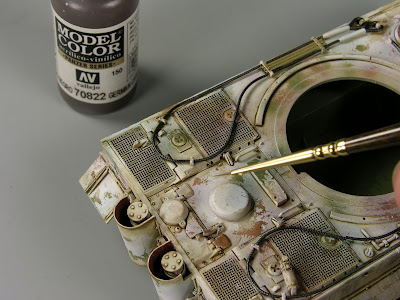
We start using the dark bromw 70922 from vallejo. It's a good color for paint dark metal chips. Use a very fine brush, new one and sharp.
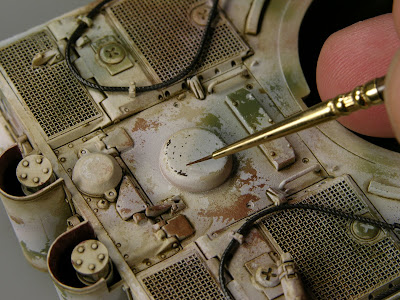
Start doing small dots, and lines...very small, and keep gorwing it as much as you want.
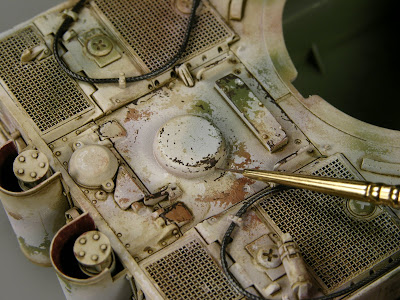
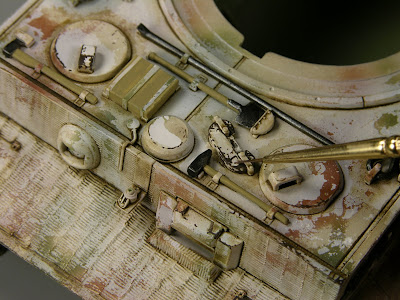
Treat each detail in a different way. Example, more intense chipping in some parts, while others remain more new. That contrast will help to the model to give bigger realism.
The oil paints is always a important step in each weathering. This paint is very flexible, easy to blend and colorfull. The oils can help us to give contrast, deep, shadows, and much more effects to our models. In this case, we will use few basic colors to create a contrast effect in some mudguards and some horizontal areas. Maybe, in anotehr kind of subject we can use more oils, or less. We must adapt this technique to each model and evoirement.
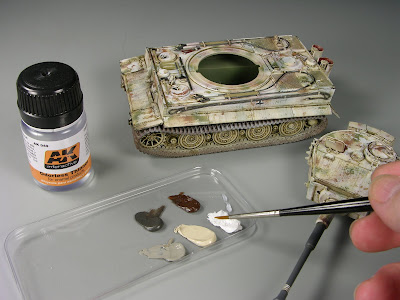
Use the white color to reiforce the white camo. Use a medium round brush for this task.
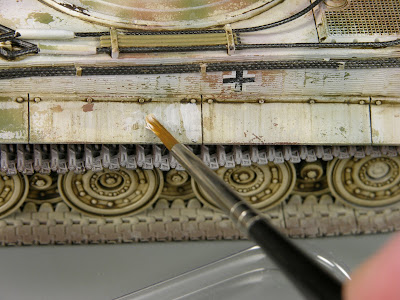
Apply the color only in one side of the mudguard section.
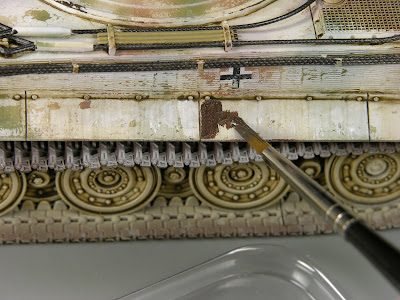
Just in the next section, apply a grey-brown color.
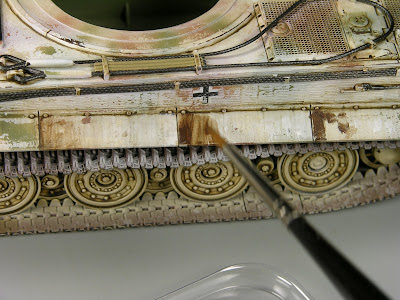
Clean the brush or take a new one and with a litle White Spirit stump the color.
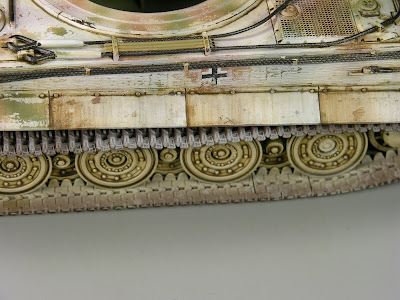
See the result. The transition is soft, but each color, both , the white and brown, are gradually more intense to the union of both mudguards sections. It create contrast, a subtile and nice visual effect to give volume to our model. You can use this technique not only in the mudguards, but in any other part of your model, like panels, hatches, engine compartiments and much more. Just selct the apropiated color for each subject. In this case I used white because the base color is winter camo.

Another example. This time we use a dirty grey to represent the acumulated dirt over the horizontal surfaces, like around the turret ring.
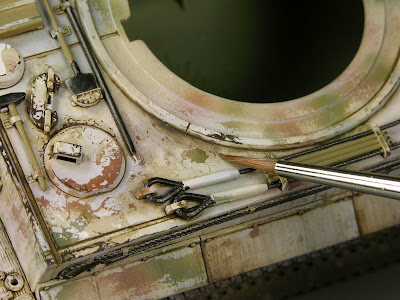
One more time, paint and stump with a clean brush and a little White Spirit.
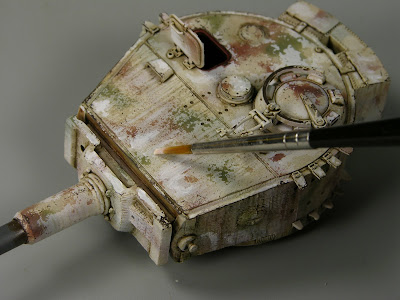
Use the white Oil color to make the highlights in the winter camo. After the washes adn streaking effects, the look of our model will be a little dark, not as white as we can expect of a winter tank. Now is time to bring to the life the white camo adding small dots of white color in some areas. Don't over do it and be RANDOM with this process. And of course, stump or blend the color to make it softer and natural.
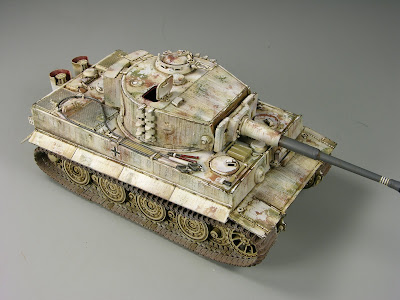
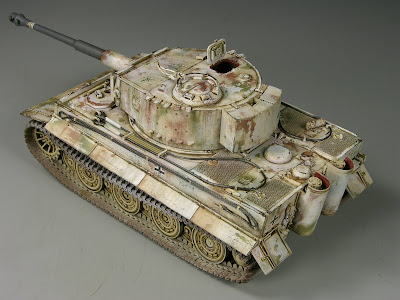
Ok, another step is already done. Very slowly, our model is getting contrast and tonal variation. This is very important in this kind of vehicles, to avoid the monotonie and boring surfaces. Note how you can see the original camo under the winter camo, faded and damage by the envoirements and elements. The chipping is adapted to the scale. These ones must be small and not excesive. And the new shades that we have give to our model will give volume and a rich surface. Now is time to paint all small details before we made the mud and dust and the final effects.
In the next chapter, I will explain how to give the final touches to the model. We will work with the spare links around the turret, painted also in winter camo. We will add the earth, mud, oils and grease and much more. Keep tunned and thank you very much for read this. I hope you like the progress of this small example of a winter tank. It is really easy and simple if you follow these steps.
...

Happy new year to you too Mig!
ReplyDeleteSuperb series of tutorials. Thanks Mig. Keep up the good work, and HAPPY NEW YEAR, mon ami!
ReplyDeleteHappy New Year and awesome progress as usual!
ReplyDeleteVery nice job Mig.
ReplyDeleteHappy new year!!!!!
Very impressive work. Congratulations.
ReplyDeletesoberbio... lo dificil hecho simple
ReplyDeleteHey MIG ,
ReplyDeleteGreat lookin' White Wash !! I'm really diggin' th FX !!
Genial, con una exposición tan buena hace que todo esto sea realmente asequible. Quien no aprenda contigo se lo tiene que hacer mirar :) je je.
ReplyDeleteFeliz año.
Javi
Hi, looking at photos in this part 3 and next part 4, I just wonder, how did you airbrush tracks (suspension) - separately from hull or did you keep whole kit as one piece?
ReplyDeleteThis is always what trouble me each and every kit... ;-)
Hi Mig,
ReplyDeleteIt 'a bit of time I wanted to ask: oil colors used for washing, and you see the clear plastic numbers are going well, or even the names of the same. Congratulations on the excellent work, I would like to do your own work on a Tiger scale 1/35. Thanks, Loris
how much do you think all those paints and pigments cost?
ReplyDelete